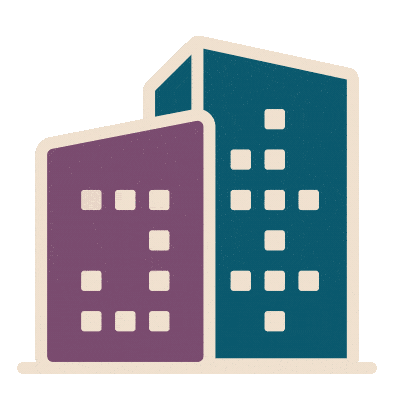IWBI Convenes Leaders on Materials Health to Shape the Future… Together
More than 50 material health experts and advocates embark on intersectional collaborations to define common framework and best practices.
Speaking at the roundtable on healthy materials in the built environment during the 2023 WELL Summit in Washington D.C., Amy Costello vividly recalls the dispute she had with the medical staff at a hospital in 2015 when she noticed the hospital was using a DEHP-containing blood bag on her mother after a surgery. As a product stewardship and sustainability manager at Armstrong World Industries, she understands how some toxics of the plasticizers can leach off PVC and end up in the human body and the environment, but to her frustration, the material is still commonly used in medical supplies. “My previous company phased out this chemical from flooring some 15 plus years ago, but they were literally putting it in my mother’s veins.” Her exacerbation depicts a reality that huge disparities exist between the research and actual practice when it comes to the materials world.
As basic components of the built environment where people spend most of their time, building materials have a profound impact on everyone’s lives besides how they impact the environment. Carbon footprints, chemical emissions and toxic compounds are often interrelated issues associated with building materials that can affect people and the planet during the extraction of raw materials and the manufacturing, installation, use and disassembly of each component of the building. All these variables at play make the materials world an extremely complex space and the complexity contributes to the stubborn resistance against the broad application of healthier materials, despite the desire to promote human health and reduce carbon footprints.

But where are we today on this healthy materials journey?
An Open Dialogue
While many years of efforts from manufacturers, retailers, designers, building rating systems and many other groups have significantly raised awareness of the importance of better products such as low-VOC paints, currently the healthier materials market appears stalled and stuck in the ‘niche’ denomination. That was part of the consensus at a roundtable IWBI convened during its 2023 WELL Summit in Washington DC. Co-hosted by Mindful MATERIALS (mM), the roundtable drew experts including architects, designers, manufacturers, contractors, representatives from building rating systems and product certifications, advocates and and industry media representatives.
They met to identify the causes of stalled progress and to seek a unified solution. Participants shared their perceived biggest challenges that exist in the advancement of healthier materials in the global market, then delved in on how IWBI and the movement for healthier materials at large can overcome such challenges. Incentivizing incremental improvement, reducing complexity, engaging decision-makers, acknowledging key stakeholders and addressing the supply chain were some of the recommended strategies that were identified during the session.
A Shared Vision
Reflecting on the current state of the healthy materials movement, there is a shared recognition that selecting healthier building materials is still a burdensome process where information is sparse, confusing and difficult to access. Moreover, there’s still a sense of confusion in the market on the true value of healthier building products, as decision makers tend to balk at perceived higher upfront costs despite demonstrations that prioritizing health in buildings can be better investments for people and organizations. The roundtable participants agreed that materials’ health cannot be neglected, that the time for action is now, and that incremental, organized and focused actions are necessary to steer the market towards demanding better products, which not only benefit the health and well-being of the end users but also of those upstream in the supply chain and in the construction process.
The roundtable called for a shared sense of purpose, for a common language that clearly states what constitutes healthier and better materials, and for tools that streamline the selection of healthier materials. Among the leaders at the roundtable, the desire to align and grow the movement is strong. Roundtable participants identified the need to step up on educating stakeholders along the healthy materials value chain, and prioritize action areas where change is more attainable and/or urgent (comparable to many organizations prioritizing to address modern slavery in supply chains). Experts also called for trusted sources of standardized data that can help make the design and construction process less complex.
A Common Materials Framework
An important announcement that followed the roundtable was the commitment by IWBI, USGBC, ILFI, AIA and IIDA, to align under the Common Materials Framework (CMF), a set of material attributes and metrics used to determine building materials’ health, environmental and social performance. This effort, led by mM, aims to formulate a common language that manufacturers can use to provide the right data about their products. This information can be used by architects and designers in their specification work to demonstrate compliance with materials-related strategies across building rating systems.
IWBI announced its commitment to map existing material features in WELL to the CMF, to conduct a gap analysis to inform new possible CMF-aligned WELL beta features, and to explore ways to support similar alignment with its Works with WELL licensing program. This commitment can have a far reaching impact due to the rapid and broad adoption of WELL programs by global organizations including nearly a third of Fortune 500. IWBI will continue convening and growing this community, enabling the materials world to shift and put people’s health first.
Next Steps
In addition to demonstrating the need for action to advance healthier building materials, the 2023 roundtable demonstrated the impact that convening thought leaders can have on invigorating the movement to improve people’s health and well-being. We expect to provide updates on our commitment and efforts during the 2024 Recharge WELL Conference at Long Beach, California and continue the industry dialogue in the near future.







